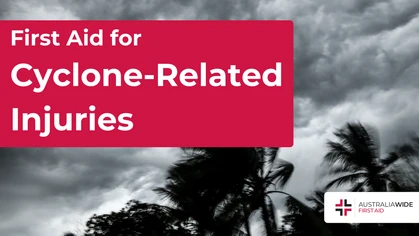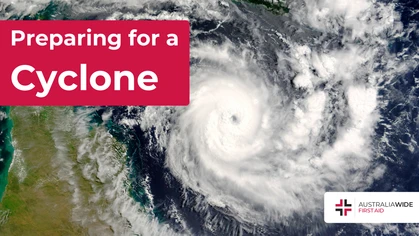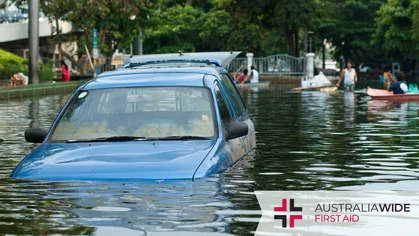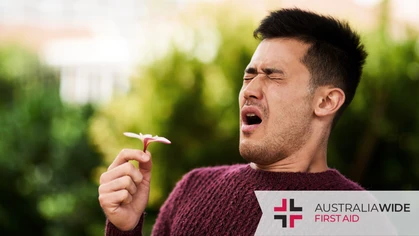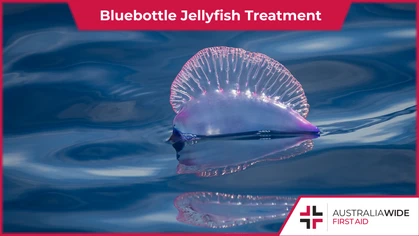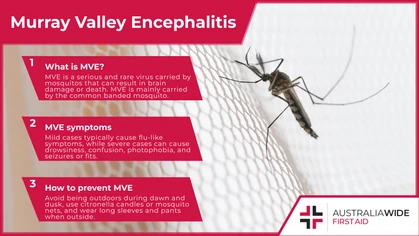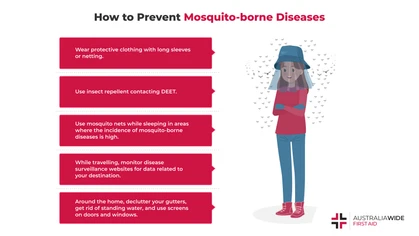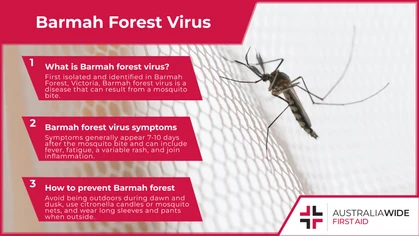Heat Cramps First Aid

Seasonal Concerns
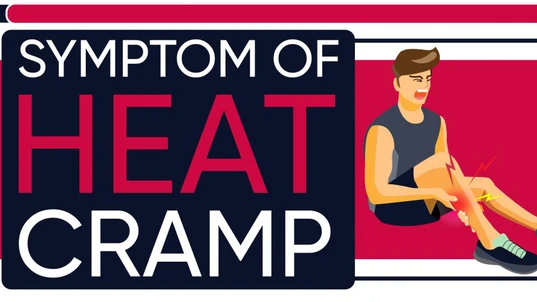
First aid treatment for heat cramps is best done promptly. Ignoring this could invite progression to more serious heat-related illnesses.
Heat cramps are the body’s way of signalling that a heat emergency is taking hold. First aid treatment for heat cramps is best done promptly. Ignoring this could invite progression to more serious heat-related illnesses. The aim of first aid treatment is to prevent symptoms from getting worse and progressing to heat exhaustion. Heat cramps — along with heat exhaustion and heat stroke — are heat-induced illnesses, listed in order of severity. All conditions warrant serious attention.What are heat cramps?
Heat cramps are intermittent spasms that can affect a person doing intense physical activity in hot and humid environments. The cramps are involuntary and can be painful and alarming. Heat cramps are the earliest symptoms of heat-related illness and can also be symptoms of heat exhaustion. Causing spasms, usually in larger muscles under stress in a hot environment, heat cramps can also come on, hours after the activity has ended. For example, a roofer or construction worker can finish their shift but develop heat cramps hours later. Some professions — those construction workers and roofers just mentioned, for example — are at higher risk for heat cramps. These are physically active people experiencing heat radiating off surfaces they’re working on, as well as the heat from the sun. Also at risk in hot conditions are infants, young children, the elderly, and other people whose temperature control mechanisms are compromised. The body’s natural response to overheating is to cool itself by sweating, which requires the sweat to then evaporate. Infants and young children can often be exposed to the risk of heat cramps because they are reliant on others to help deal with the heat, as well as for their fluid intake. For this reason, it’s advisable to avoid swaddling an infant. It’s better instead to allow air movement over the skin to promote sweat evaporation in the hot weather. The elderly can easily become dehydrated if they have underlying medical conditions, such as heart or lung disease. Many also live alone or cannot afford air conditioning, which again increases their risks for heat-related illnesses. Various medications can impair the body’s sweat and heat regulation. Examples include medications prescribed for psychiatric conditions, including antipsychotics and tranquilisers, as well as over-the-counter cold medications and antihistamines. A person who drinks plenty of water or other fluids can also be at risk if those fluids are low in salt and the person sweats profusely.Causes of Heat Cramps
Dehydration and electrolyte imbalance are thought to be the cause of muscle cramping. Electrolytes include essential minerals that are involved in chemical reactions in your muscles, such as sodium, potassium, calcium, and magnesium. An imbalance can cause problems. Alternative theories suggest that, as muscles tire, the ability for them to regulate their own contraction is lost. This is known as altered neuromuscular control. Regardless of the reasons, diagnosis and treatment for heat cramps remain the same.Diagnosing heat cramps
Diagnosing heat cramps is usually done by identifying which muscles are in involuntary spasms and also reviewing the patient's history. It will be useful to know details about the environment where the person became affected by heat cramps. The details would include how hot it was, how humid it was, and whether air circulation was adequate. Also of interest: the activity being performed and its duration; when the cramps started and which muscles were involved. Was there associated sweating? Had the person been drinking sufficient water? Was the affected individual acclimated to the hot environment? Physical examination may uncover signs of dehydration, such as dry mouth and tongue, lack of sweat in the armpits and groin, and decreased urine output. The vital signs — e.g., low blood pressure and rapid heart rate (tachycardia) — can be a clue. The affected person's blood pressure may be much lower when standing compared to lying down (orthostatic hypotension). If fluid replacement has been inadequate, cramps may recur when the muscle is taken through its normal range of motion. The cramped muscles might be sore to touch.What are the symptoms of heat cramps?
Symptoms of heat cramps include involuntary spasms of the large muscles in the body and profuse sweating. The muscle groups most often affected include the thigh and leg (quadriceps, hamstrings, gastrocnemius), the core muscles (abdominal wall, back), and the arm muscles (biceps, triceps). Leg muscle cramps afflict runners and football players. People who lift objects in their work can get cramps in their arm muscles or core trunk muscles, such as the abdominal muscles (rectus abdominus). The colour of urine can indicate heat cramps or a heat-related illness. When the body has adequate water, urine tends to be clear. But when the body is dehydrated, urine is concentrated as the kidneys try to conserve water. The resulting urine is strong-smelling and darker yellow. Sometimes a person with heat cramps can have other symptoms, such as light-headedness, weakness, nausea, and vomiting, and headache. In this case, he or she may be suffering from heat exhaustion. Be on the alert if an affected individual has stopped sweating or becomes confused or feverish. They may be developing heat stroke, the most severe form of heat-related illness or hyperthermia. Heat stroke is a true medical emergency.
How to treat heat cramps
First aid treatment for heat cramps involves rest, cooling the body, hydration, and stretching muscles that are cramping. Heat cramps should be treated promptly, usually when and where they occur. The affected person should cease all activity and rest in a cool place. The cramps can be overcome by gently stretching the cramped muscle(s). Fluid loss should be replaced by drinking water and sports drinks, or other electrolyte replacement solutions. You could make your own salt solution by dissolving 1/4 to 1/2 teaspoon of table salt in about 1L of water. Salt tablets by themselves are not recommended, as they can cause stomach upset and will not adequately replace fluid volume lost. If the cramps cannot be controlled within an hour, medical care should be sought. Professional medical care focuses on symptom relief. A doctor will check for more severe heat illness and possibly provide IV fluid rehydration. Fluids are administered intravenously when replacing body fluids is problematic because of the patient being nauseous or vomiting. Anti-nausea medications may be used to control those symptoms. Painful muscles may be treated with over-the-counter anti-inflammatory medications. The difference between heat cramps and heat exhaustion is a fine line. We’re dealing with a spectrum from mild to moderate heat-related illness. The symptoms can overlap. Severe heat cramps can actually be heat exhaustion. This is likely the case when the person has nausea, or vomits, and cannot replace fluid loss. Also, when they have significant fatigue and weakness, or when profuse sweating continues despite the person being transferred to a cooler environment. Heat stroke is at the extreme end of the spectrum of heat-related illness. This is when the body's ability to cool itself no longer functions and temperature spikes, greater than 40° C (104° F). Heat stroke is a true medical emergency. Confusion, coma, and death can occur. Emergency medical services should be called (000) immediately, if you believe the person has heat stroke. Please also refer to the article First Aid for Heat Stroke for advice on how to proceed.
How long do heat cramps last?
Heat cramps usually resolve quickly with rest, hydration and stretching. It’s important not to overlook the fact that heat cramps represent the first signs of heat-related illness. Progression to the more serious conditions of heat exhaustion or heat stroke is the worry. Long-term, the consequences of heat cramps are few. However, a person who has had heat cramps may be prone to them recurring in the future.How to prevent heat cramps
Heat cramps can be prevented by avoiding exercise or work during the heat of the day, drinking plenty of fluids, and resting in cool or shaded areas when possible. A person who has had heat cramps is more prone to them recurring. Be vigilant to keep well hydrated. Acclimating to a hot environment over a period of days will allow the body and its muscles to adapt to its fluid and electrolyte needs. Some businesses have all but eliminated heat cramps by supplying salt-enriched fluids for their factory workers.
Other Resources
What are heat cramps?
Heat cramps are intermittent spasms that can affect a person doing intense physical activity in hot and humid environments. The cramps are involuntary and can be painful and alarming. Heat cramps are the earliest symptoms of heat-related illness and can also be symptoms of heat exhaustion. Causing spasms, usually in larger muscles under stress in a hot environment, heat cramps can also come on, hours after the activity has ended. For example, a roofer or construction worker can finish their shift but develop heat cramps hours later. Some professions — those construction workers and roofers just mentioned, for example — are at higher risk for heat cramps. These are physically active people experiencing heat radiating off surfaces they’re working on, as well as the heat from the sun. Also at risk in hot conditions are infants, young children, the elderly, and other people whose temperature control mechanisms are compromised. The body’s natural response to overheating is to cool itself by sweating, which requires the sweat to then evaporate. Infants and young children can often be exposed to the risk of heat cramps because they are reliant on others to help deal with the heat, as well as for their fluid intake. For this reason, it’s advisable to avoid swaddling an infant. It’s better instead to allow air movement over the skin to promote sweat evaporation in the hot weather. The elderly can easily become dehydrated if they have underlying medical conditions, such as heart or lung disease. Many also live alone or cannot afford air conditioning, which again increases their risks for heat-related illnesses. Various medications can impair the body’s sweat and heat regulation. Examples include medications prescribed for psychiatric conditions, including antipsychotics and tranquilisers, as well as over-the-counter cold medications and antihistamines. A person who drinks plenty of water or other fluids can also be at risk if those fluids are low in salt and the person sweats profusely.Causes of Heat Cramps
Dehydration and electrolyte imbalance are thought to be the cause of muscle cramping. Electrolytes include essential minerals that are involved in chemical reactions in your muscles, such as sodium, potassium, calcium, and magnesium. An imbalance can cause problems. Alternative theories suggest that, as muscles tire, the ability for them to regulate their own contraction is lost. This is known as altered neuromuscular control. Regardless of the reasons, diagnosis and treatment for heat cramps remain the same.Diagnosing heat cramps
Diagnosing heat cramps is usually done by identifying which muscles are in involuntary spasms and also reviewing the patient's history. It will be useful to know details about the environment where the person became affected by heat cramps. The details would include how hot it was, how humid it was, and whether air circulation was adequate. Also of interest: the activity being performed and its duration; when the cramps started and which muscles were involved. Was there associated sweating? Had the person been drinking sufficient water? Was the affected individual acclimated to the hot environment? Physical examination may uncover signs of dehydration, such as dry mouth and tongue, lack of sweat in the armpits and groin, and decreased urine output. The vital signs — e.g., low blood pressure and rapid heart rate (tachycardia) — can be a clue. The affected person's blood pressure may be much lower when standing compared to lying down (orthostatic hypotension). If fluid replacement has been inadequate, cramps may recur when the muscle is taken through its normal range of motion. The cramped muscles might be sore to touch.What are the symptoms of heat cramps?
Symptoms of heat cramps include involuntary spasms of the large muscles in the body and profuse sweating. The muscle groups most often affected include the thigh and leg (quadriceps, hamstrings, gastrocnemius), the core muscles (abdominal wall, back), and the arm muscles (biceps, triceps). Leg muscle cramps afflict runners and football players. People who lift objects in their work can get cramps in their arm muscles or core trunk muscles, such as the abdominal muscles (rectus abdominus). The colour of urine can indicate heat cramps or a heat-related illness. When the body has adequate water, urine tends to be clear. But when the body is dehydrated, urine is concentrated as the kidneys try to conserve water. The resulting urine is strong-smelling and darker yellow. Sometimes a person with heat cramps can have other symptoms, such as light-headedness, weakness, nausea, and vomiting, and headache. In this case, he or she may be suffering from heat exhaustion. Be on the alert if an affected individual has stopped sweating or becomes confused or feverish. They may be developing heat stroke, the most severe form of heat-related illness or hyperthermia. Heat stroke is a true medical emergency.
How to treat heat cramps
First aid treatment for heat cramps involves rest, cooling the body, hydration, and stretching muscles that are cramping. Heat cramps should be treated promptly, usually when and where they occur. The affected person should cease all activity and rest in a cool place. The cramps can be overcome by gently stretching the cramped muscle(s). Fluid loss should be replaced by drinking water and sports drinks, or other electrolyte replacement solutions. You could make your own salt solution by dissolving 1/4 to 1/2 teaspoon of table salt in about 1L of water. Salt tablets by themselves are not recommended, as they can cause stomach upset and will not adequately replace fluid volume lost. If the cramps cannot be controlled within an hour, medical care should be sought. Professional medical care focuses on symptom relief. A doctor will check for more severe heat illness and possibly provide IV fluid rehydration. Fluids are administered intravenously when replacing body fluids is problematic because of the patient being nauseous or vomiting. Anti-nausea medications may be used to control those symptoms. Painful muscles may be treated with over-the-counter anti-inflammatory medications. The difference between heat cramps and heat exhaustion is a fine line. We’re dealing with a spectrum from mild to moderate heat-related illness. The symptoms can overlap. Severe heat cramps can actually be heat exhaustion. This is likely the case when the person has nausea, or vomits, and cannot replace fluid loss. Also, when they have significant fatigue and weakness, or when profuse sweating continues despite the person being transferred to a cooler environment. Heat stroke is at the extreme end of the spectrum of heat-related illness. This is when the body's ability to cool itself no longer functions and temperature spikes, greater than 40° C (104° F). Heat stroke is a true medical emergency. Confusion, coma, and death can occur. Emergency medical services should be called (000) immediately, if you believe the person has heat stroke. Please also refer to the article First Aid for Heat Stroke for advice on how to proceed.
How long do heat cramps last?
Heat cramps usually resolve quickly with rest, hydration and stretching. It’s important not to overlook the fact that heat cramps represent the first signs of heat-related illness. Progression to the more serious conditions of heat exhaustion or heat stroke is the worry. Long-term, the consequences of heat cramps are few. However, a person who has had heat cramps may be prone to them recurring in the future.How to prevent heat cramps
Heat cramps can be prevented by avoiding exercise or work during the heat of the day, drinking plenty of fluids, and resting in cool or shaded areas when possible. A person who has had heat cramps is more prone to them recurring. Be vigilant to keep well hydrated. Acclimating to a hot environment over a period of days will allow the body and its muscles to adapt to its fluid and electrolyte needs. Some businesses have all but eliminated heat cramps by supplying salt-enriched fluids for their factory workers.
Originally published at
https://www.australiawidefirstaid.com.au/resources/heat-cramps-first-aid
as part of the Australia Wide First Aid Articles Library
